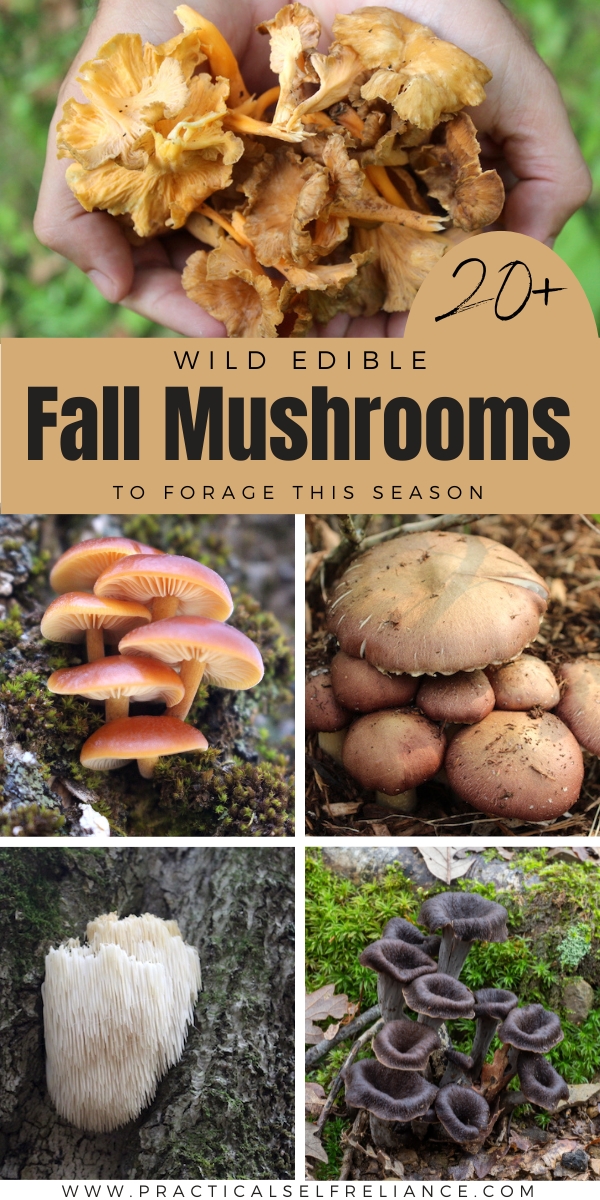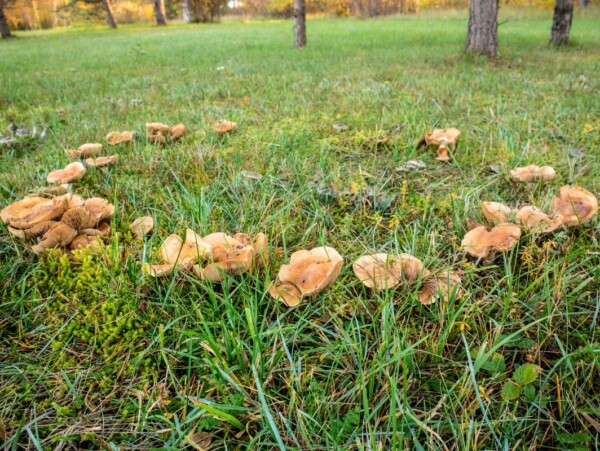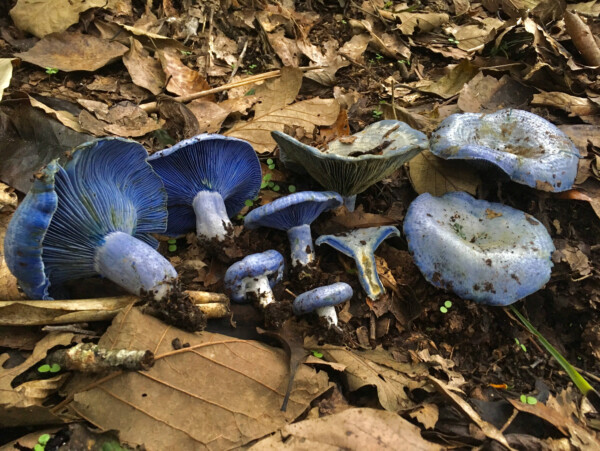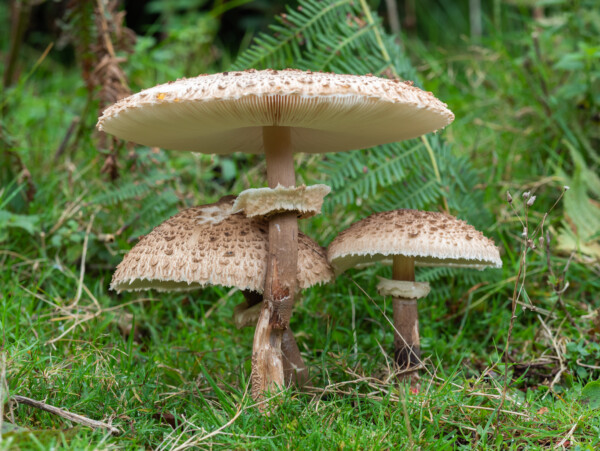Affiliate disclosure: This post may contain affiliate links. Please see our Privacy Policy.
Autumn is one of the best times to forage mushrooms, as cooling temperatures bring out many of the choice edible and medicinal mushroom species. These fall mushrooms are some of the best anywhere, and most are easy to identify for beginners.
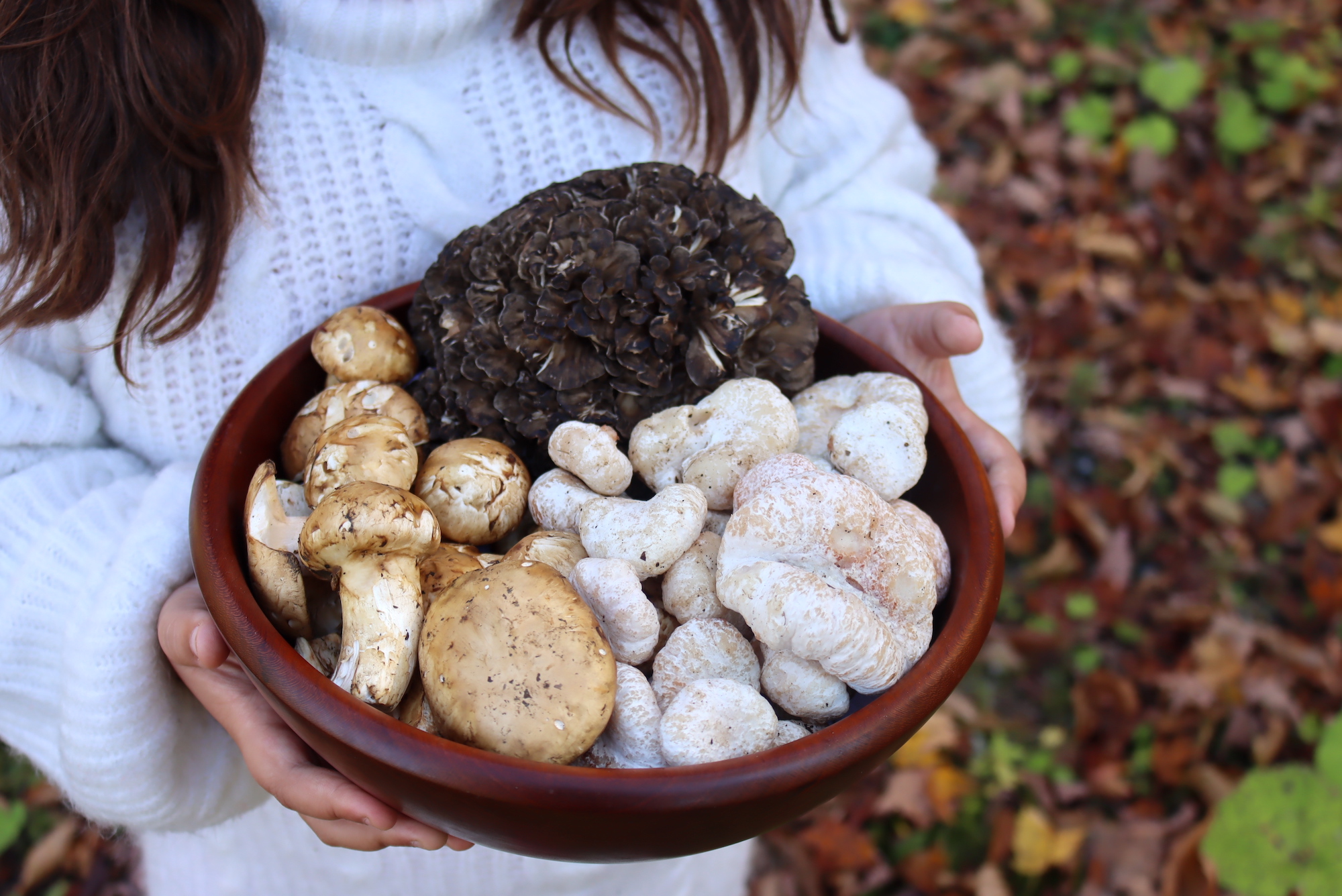
The autumn months are one of the best times to harvest wild mushrooms, and cooling temps bring some of the best wild edible mushrooms to the woods.
No matter where you live, fall mushroom foraging is one of the best times to come home with a basket of fungal treasures.
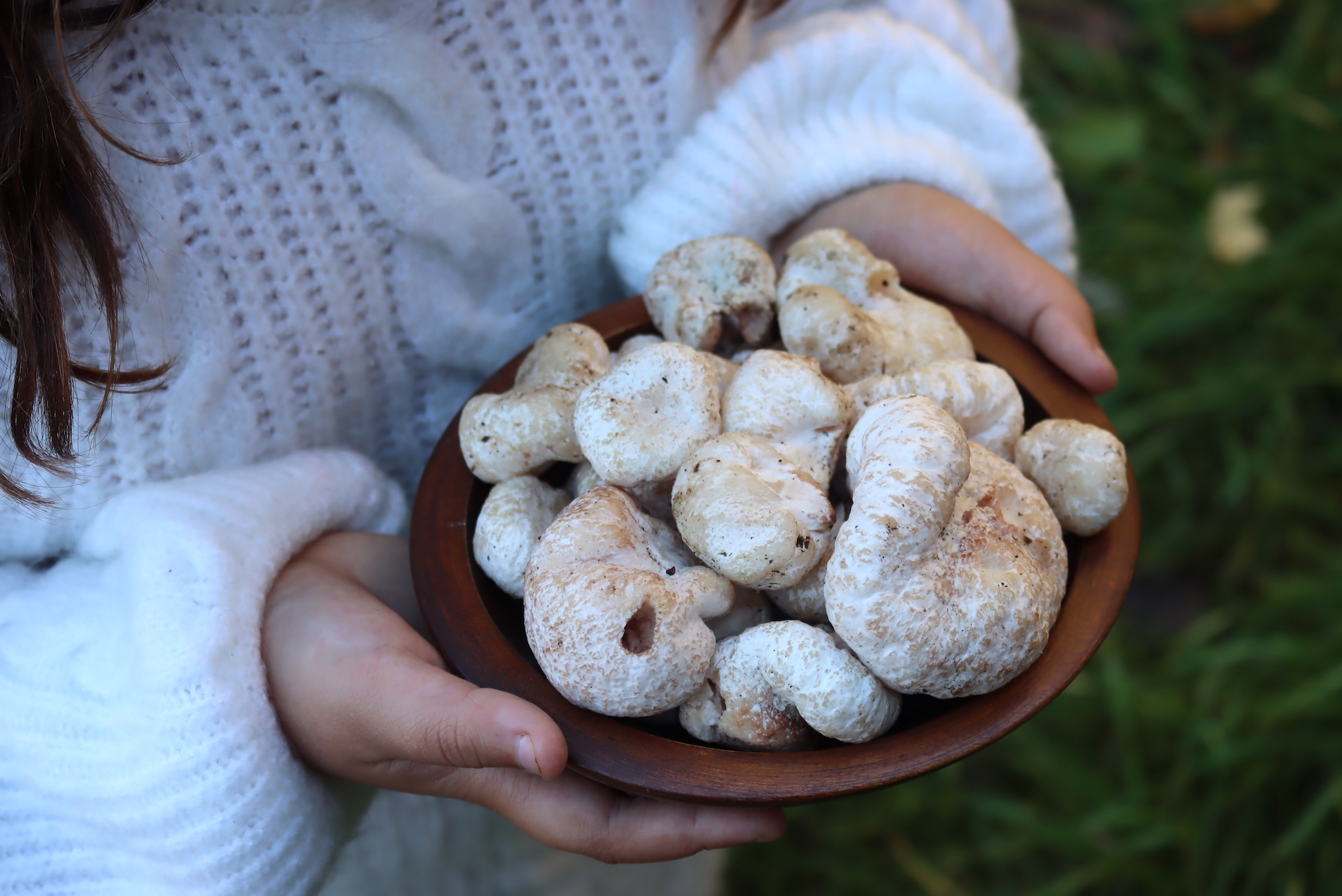
Fall Mushroom Species
The actual season for any given mushroom depends on your location and climate. Many “fall” mushrooms appear in late summer up here in Vermont, because there will be snow on the ground by the time we get to what everyone else calls “pumpkin spice season.”
Summer mushrooms like Chicken of the Woods are often still around in the fall.
Some spring mushrooms like Western King Boletes and Dryad’s Saddle come back again when temps cool in the autumn, meaning they have multiple seasons in any given year.
In general, these are some of the best fall mushrooms available in most locations:
- Black Trumpet Mushrooms
- Cauliflower Mushrooms
- Chicken of the Woods
- Coral Mushrooms
- Dryad’s Saddle (or Pheasant Back)
- Hedgehog Mushrooms
- Hen of the Woods (Maitake)
- Honey Mushrooms
- Indigo Milk Cap
- Lion’s Mane
- King Boletes
- Lobster Mushrooms
- Matsutake
- Oyster Mushrooms
- Puffball Mushrooms
- Saffron Milk Caps
- Shaggy Mane Mushrooms
- Shrimp of the Woods
- Turkey Tail Mushrooms
- Velvet Foot Mushrooms (Enoki)
- Winecap or King Stropharia
- Witches Butter
- Wood Blewits
- Yellowfoot Chanterelles
I’ll take you through each one, with an identification guide to help you find your own.
Black Trumpet Mushrooms
Though they’re a bit tricky to pick out from the other dark colors on the forest floor, foraging black trumpet mushrooms is well worth the effort.
They’re a lot like chanterelles, largely because they are technically a chanterelle…just of a different color. Like many chanterelles, they have a fragrant, fruit-like aroma, and they’re one of the best-tasting wild mushrooms.
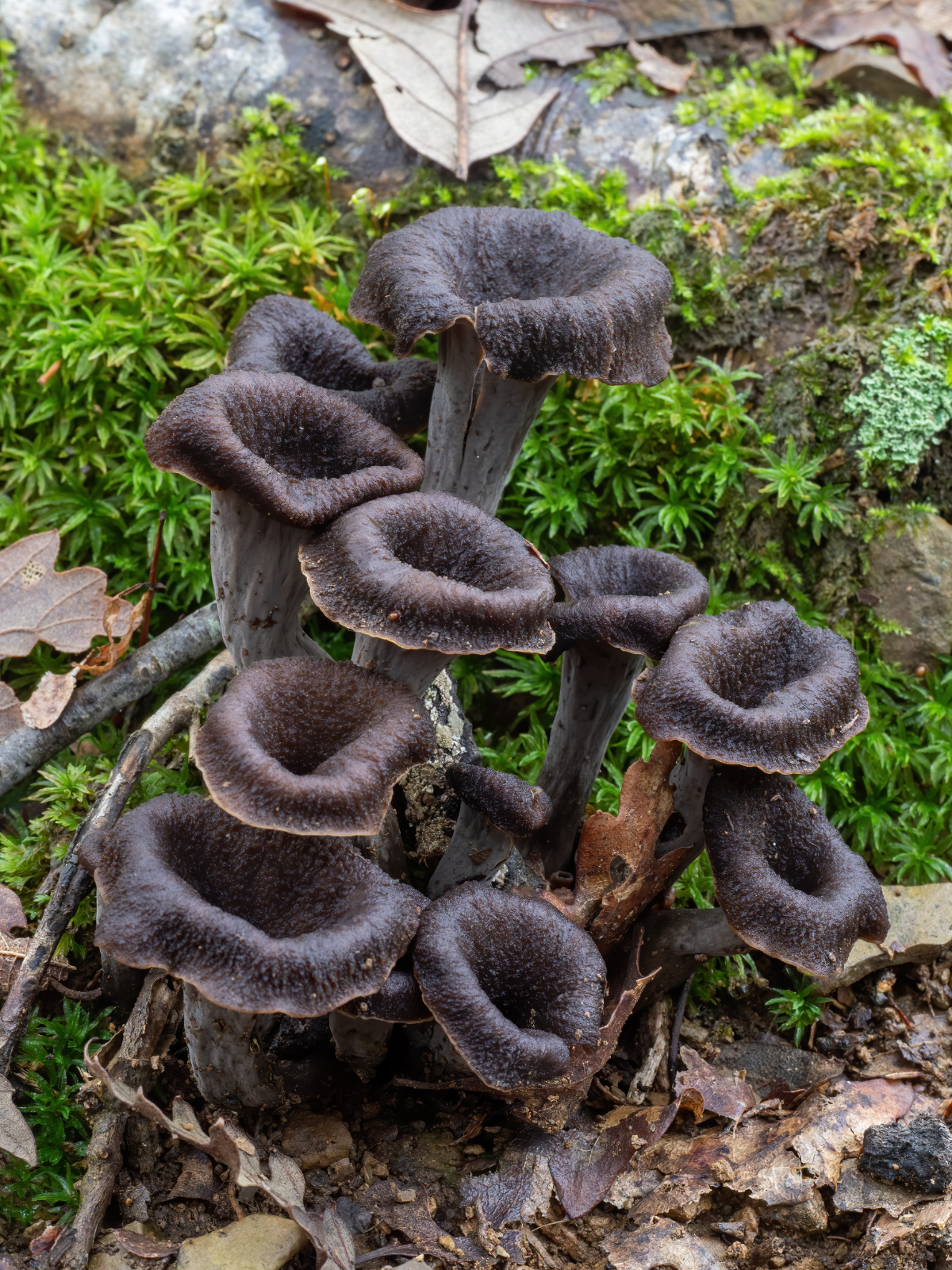
Cauliflower Mushrooms
An easy to identify wild mushroom, there’s usually no question when you’ve found a wild cauliflower mushroom. They actually look like a head of cauliflower growing right out of the ground.
It’s sometimes called “noodle mushroom” because when harvested at it’s prime, it has a texture like al-dente pasta noodles. Its flavor is delicate and indistinct, though “mushroom-y,” making it a good choice to add to stir-fries where it can absorb a lot of other flavors.
It also does well simply fried with butter, onions, and a bit of garlic.
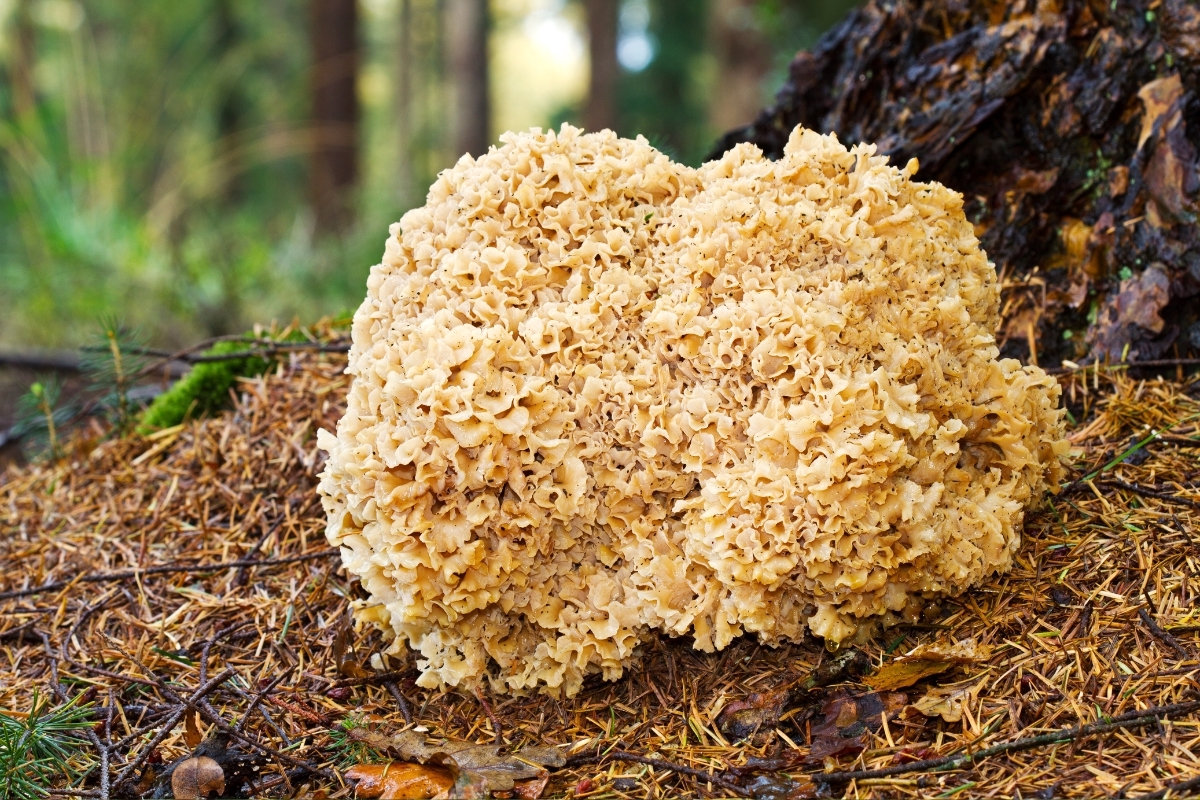
Chicken of the Woods
These mushrooms don’t look like chicken, but they do surprisingly taste a lot like chicken.
When battered and fried, chicken of the woods mushrooms has a flavor and texture that’s almost just like chicken breast. It can be used in place of chicken in almost any recipe, making it a great vegan meat substitute.
Even if you’re not vegan, there is something really lovely about actually harvesting chicken from the woods.
They have no close look-alikes, and they’re incredibly common, making them a perfect beginner’s mushroom.
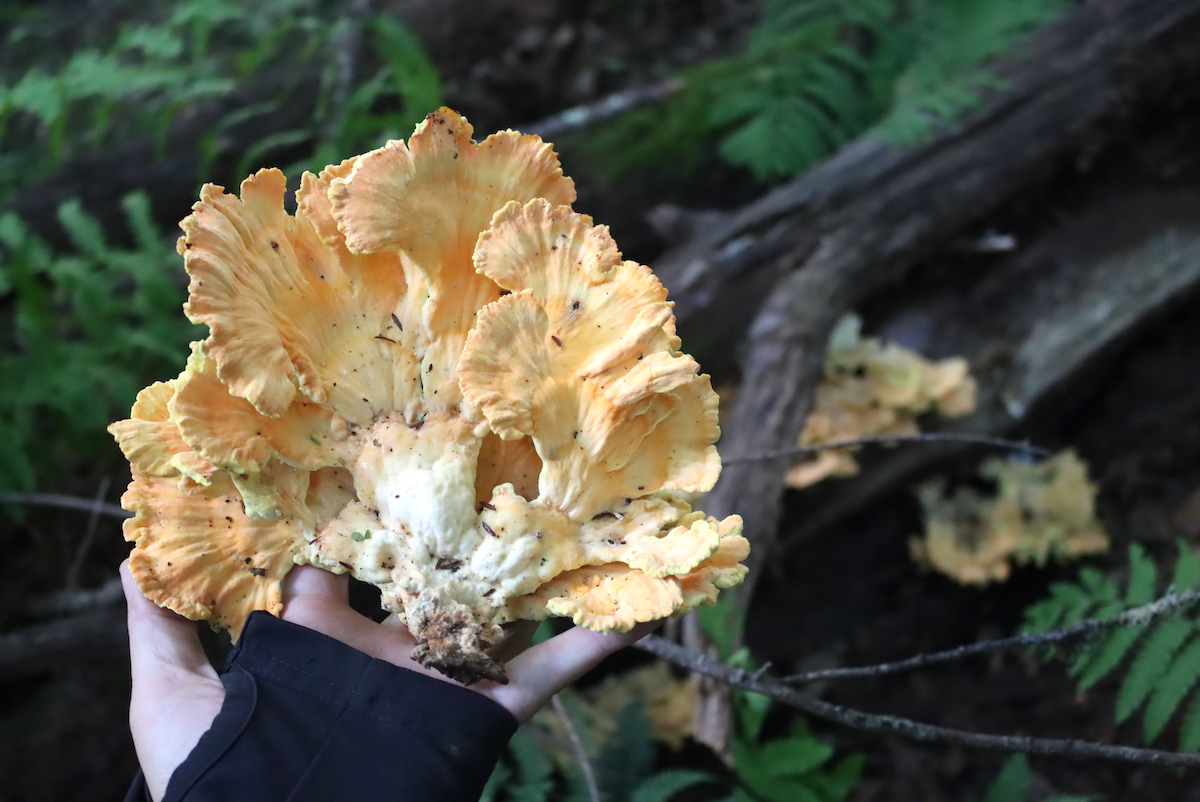
Coral Mushrooms
Though not beginner mushrooms, coral mushrooms can be found just about everywhere in the woods.
They can be a bit tricky to identify, and they’re not the best edibles, but they are fun to find nonetheless!
As always, be 100% certain of your ID before bringing any mushroom home to cook, and with corals in particular, I’d recommend having someone knowledgeable around to verify your ID.
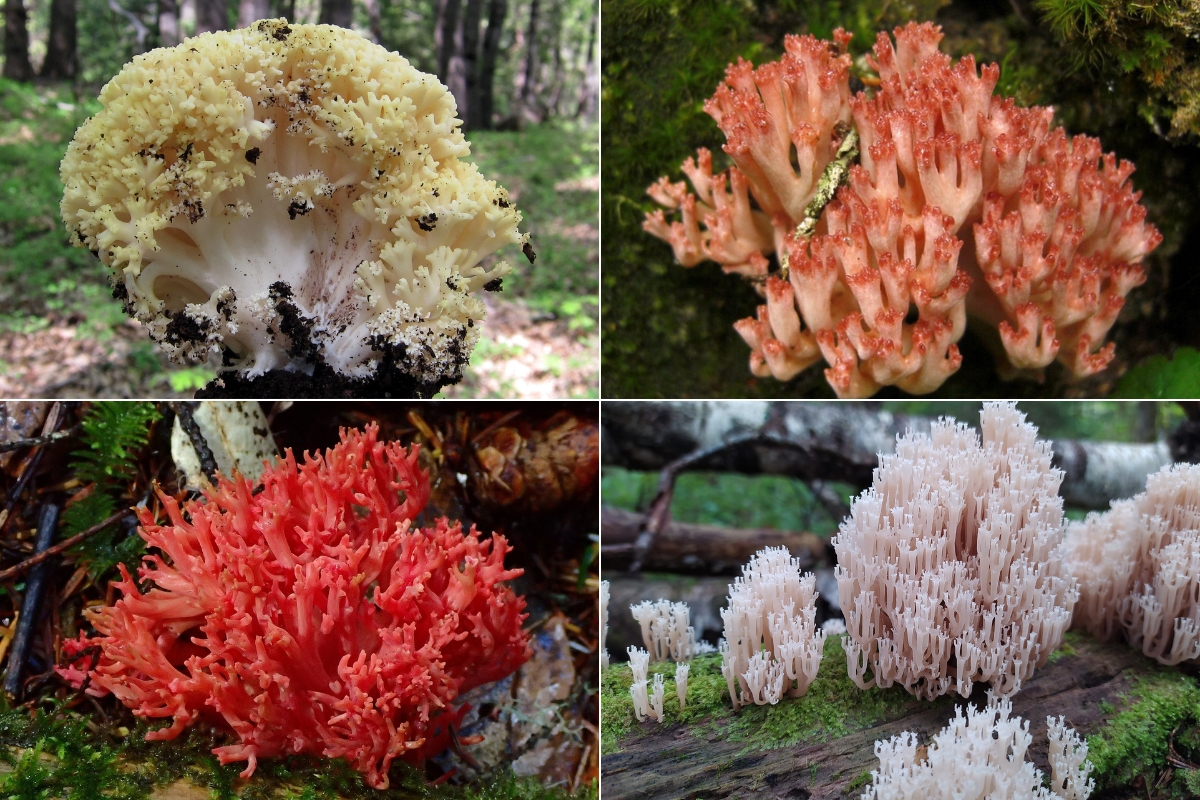
Dryad’s Saddle (or Pheasant Back Mushrooms)
Pheasant back mushrooms are usually considered spring mushrooms, but they do make a comeback each fall as well when temperatures drop.
They’re best when harvested young and tender, but older specimens can make a lovely mushroom broth.
This one’s easy to identify, and perfect for beginner foragers.
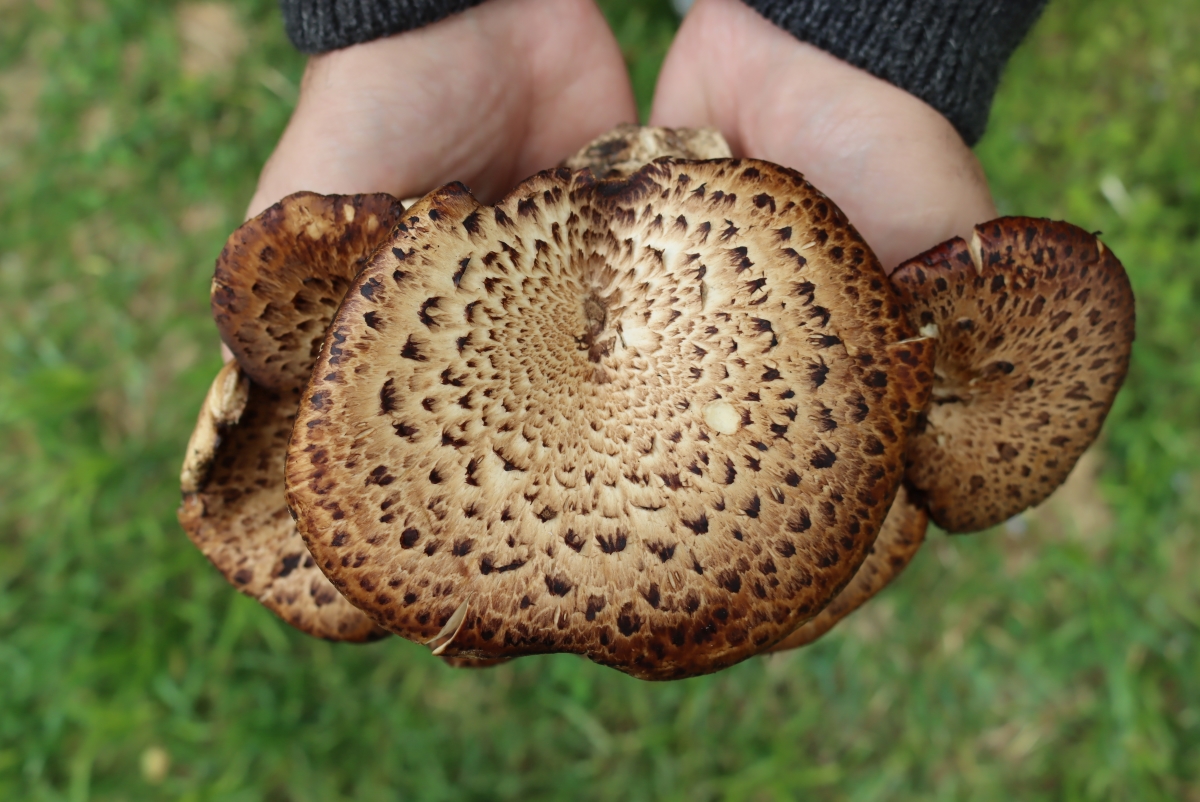
Hedgehog Mushrooms
Sometimes called “sweet tooth” mushrooms, hedgehog mushrooms are like an easier-to-identify chanterelle.
They have distinctive tooth-like projections from their undersides, which makes them pretty unique in the mushroom world.
Hedgehog mushrooms are choice edibles, so these are alwasy a fun find in the woods (and perfect for beginners).
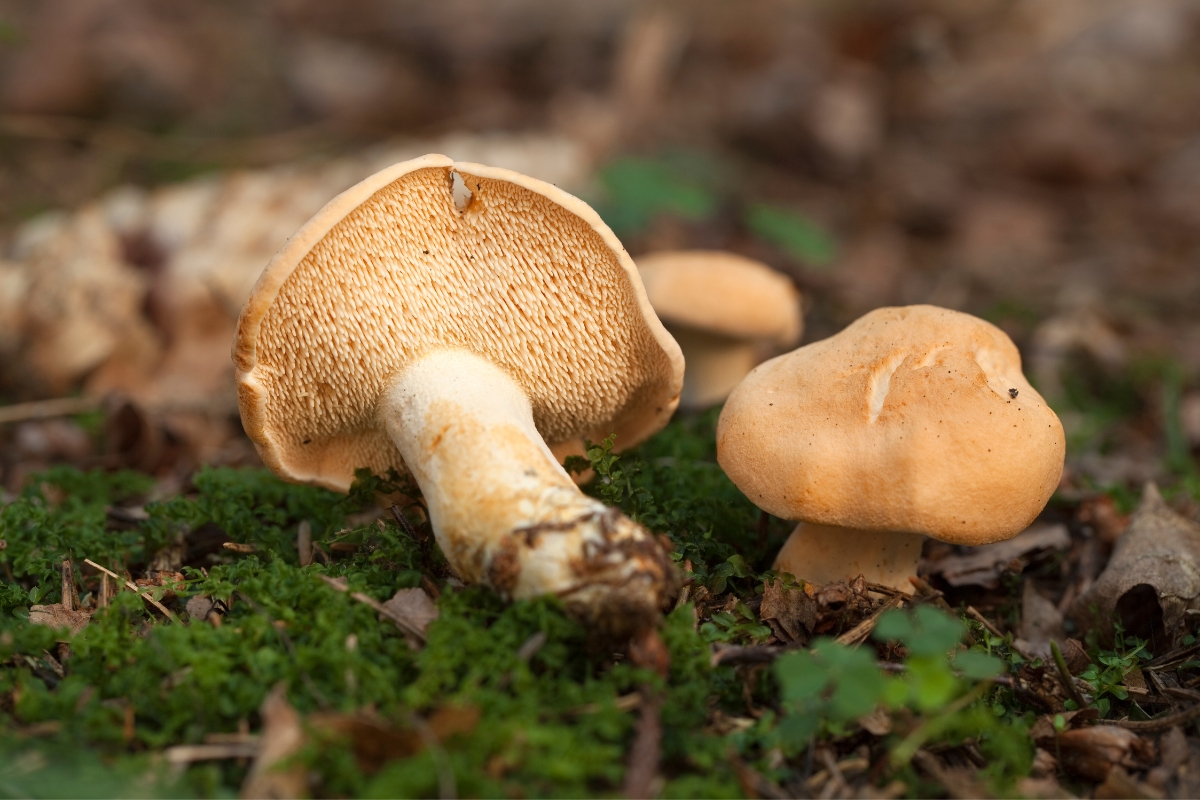
Hen of the Woods (Maitake)
While Chicken of the Woods mushrooms taste like chicken, Hen of the Woods mushrooms look like a fluffy chicken instead.
They taste rich and mushroom-y, full of umami flavor. They’re also considered a prize medicinal mushroom too, and there are a number of Maitake mushroom supplements on the market.
Medicinal or not, they’re absolutely delicious and always a great beginner-friendly, easy-to-identify mushroom that’s a thrill to find in the woods.

Honey Mushrooms
These can be a bit tricky to identify, but they are quite common and grow en masse when they are present.
Honey mushrooms have a mild, nutty, mushroomy flavor, but they can be a bit slimy when cooked (a bit like okra).
They’re often associated with shrimp of the woods mushrooms, which may or may not be another mushroom parasitizing honey mushrooms. (Mycologists are still arguing about that one.)
Personally, I prefer shrimp of the woods mushrooms (which I’ll discuss shortly), and shrimp of the woods is much easier to identify.
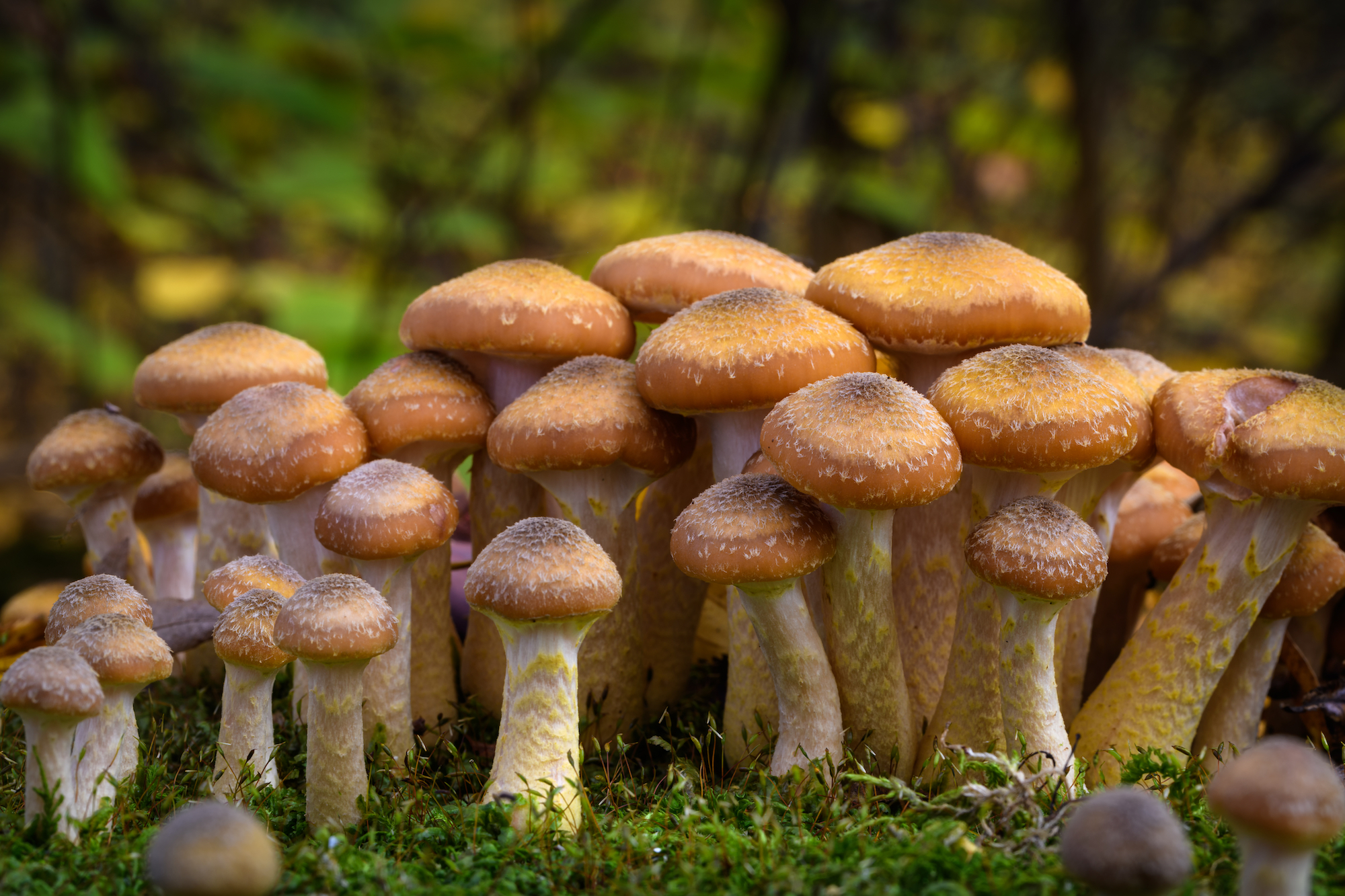
Indigo Milk Cap
Though not a choice edible, it is pretty magical to find a purple mushroom in the woods. Though they taste “mushroom-y,” indigo milk caps tend to have a crazy fruity pebbles-like aroma when you find them.
They’ll turn other things you cook them with a bit purple, which is a novelty in itself.
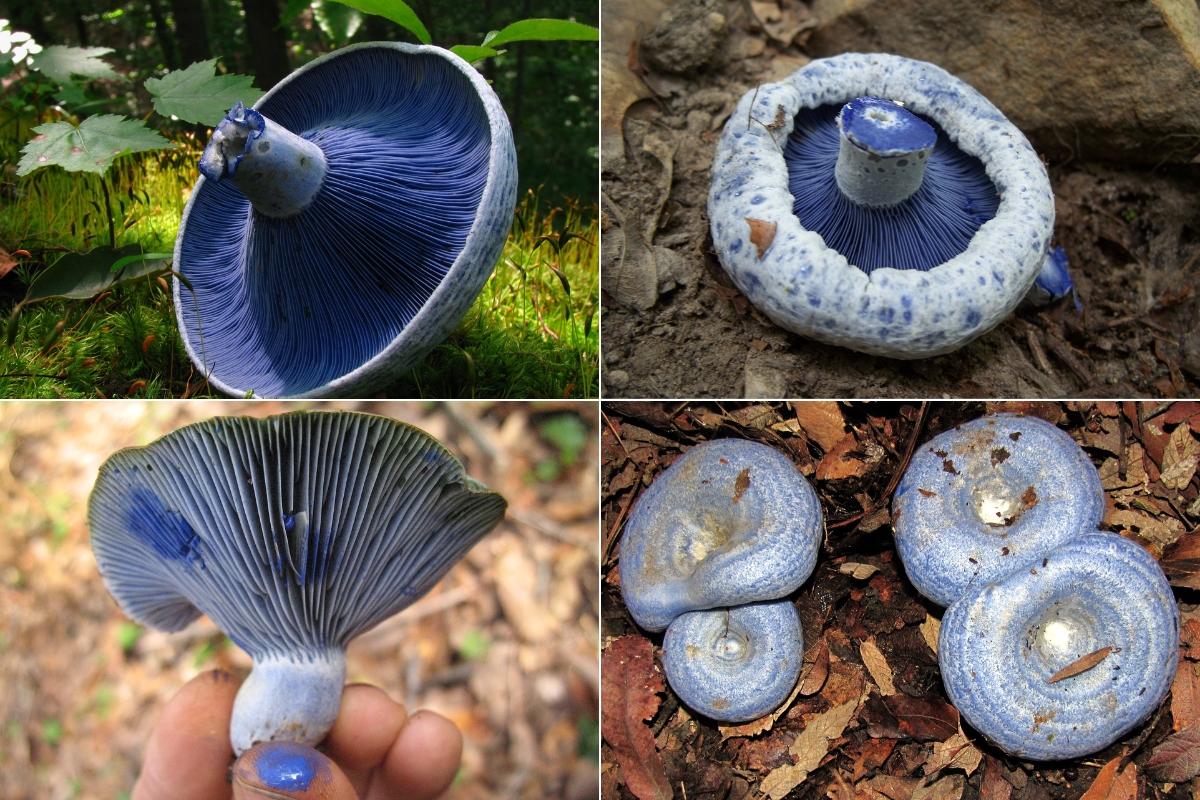
Lion’s Mane Mushrooms
Though they have no close look likes, and they’re really common, lion’s mane mushrooms can be a bit hard to forage since they tend to grow high up in trees.
Still, often enough, you’ll get lucky and can find one on a downed tree, or one that’s low enough to reach (even if you have to grab a poking stick to get the job done).
The name lion’s mane comes from the shaggy appearance, but these tend to actually taste a lot like crab or seafood. Many people absolutely love these shellfish-flavored mushrooms, and they fetch high prices as a choice edible.
Lion’s mane mushrooms are also considered potent medicinals (and there are many lion’s mane supplements on the market), so they’re extra exciting to find.
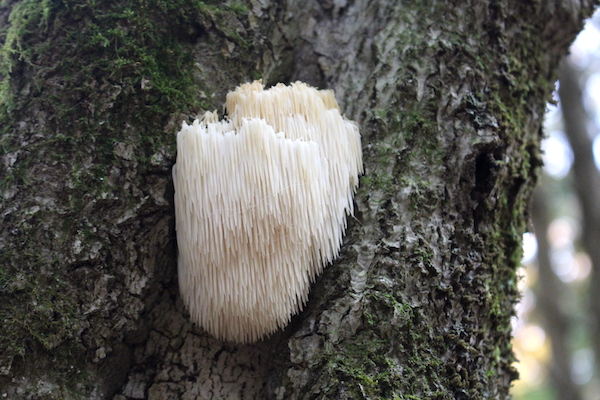
King Boletes
Generally, boletes are considered a cool season mushroom. They make an appearance in the spring, and then take the summer off before returning in the autumn months.
They can be found in the summer at high elevations, but really, autumn is one of the best times to find these rich, flavorful wild mushrooms.
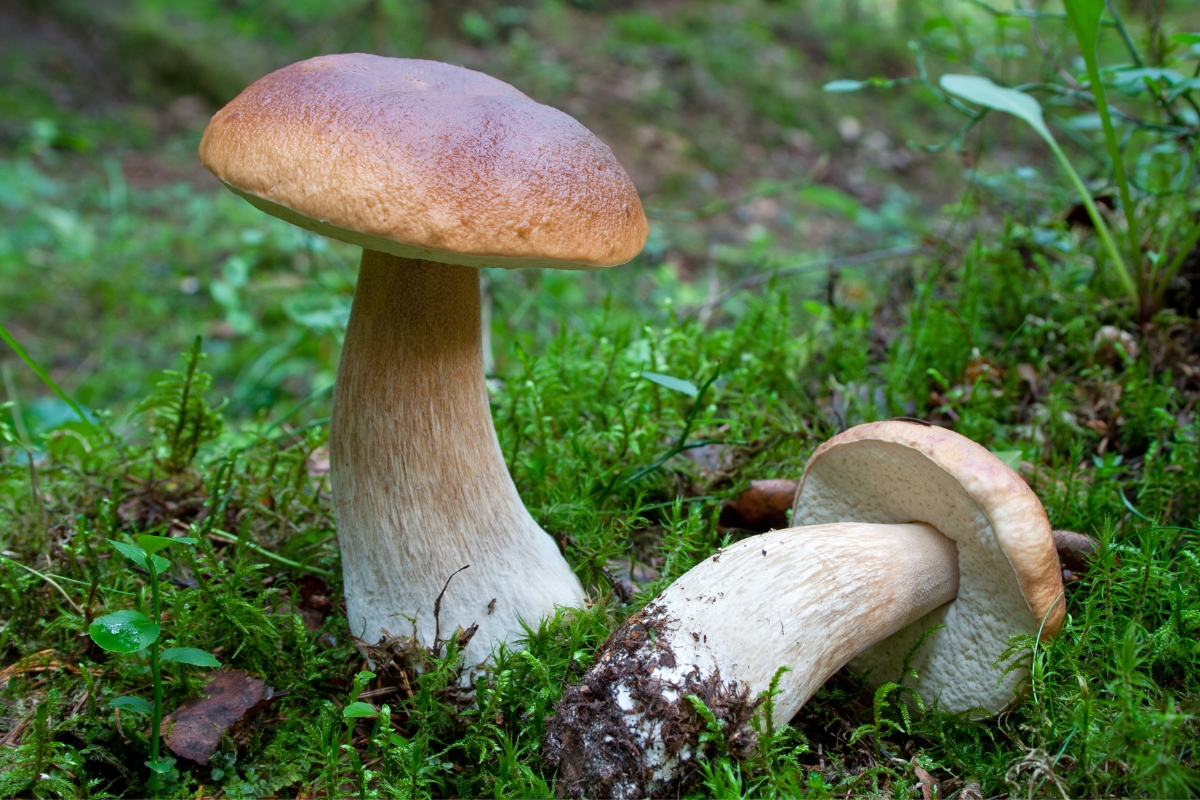
Lobster Mushrooms
With a flavor like seafood and a bright orange color, lobster mushrooms really live up to their name.
They’re not actually distinct mushrooms, but rather a mushroom that parasitizes another mushroom, making them something of an oddity.
Still, lobster mushrooms are common and very easy to identify, making them perfect for beginners.
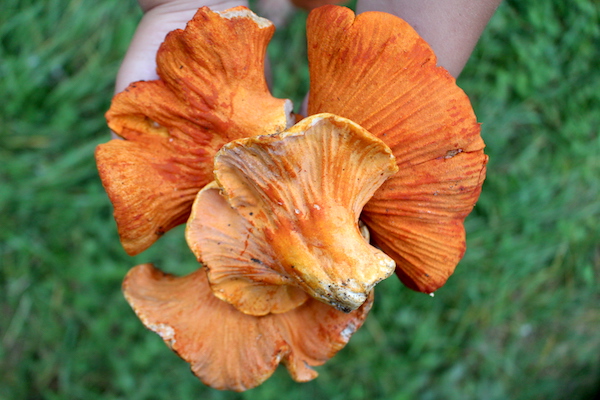
Matsutake
They don’t look like much, but matsutake are one of the most expensive mushrooms in the world, and they fetch unbelievable prices in Asia. They have an intense umami flavor that’s hard to beat, and they boast some incredible medicinal properties.
They’re relatively common in hemlock forests, but they tend to hide under the leaf litter, so they can be tricky to spot. Still, it’s always a joy to bring home a basket of wild matsutake mushrooms.
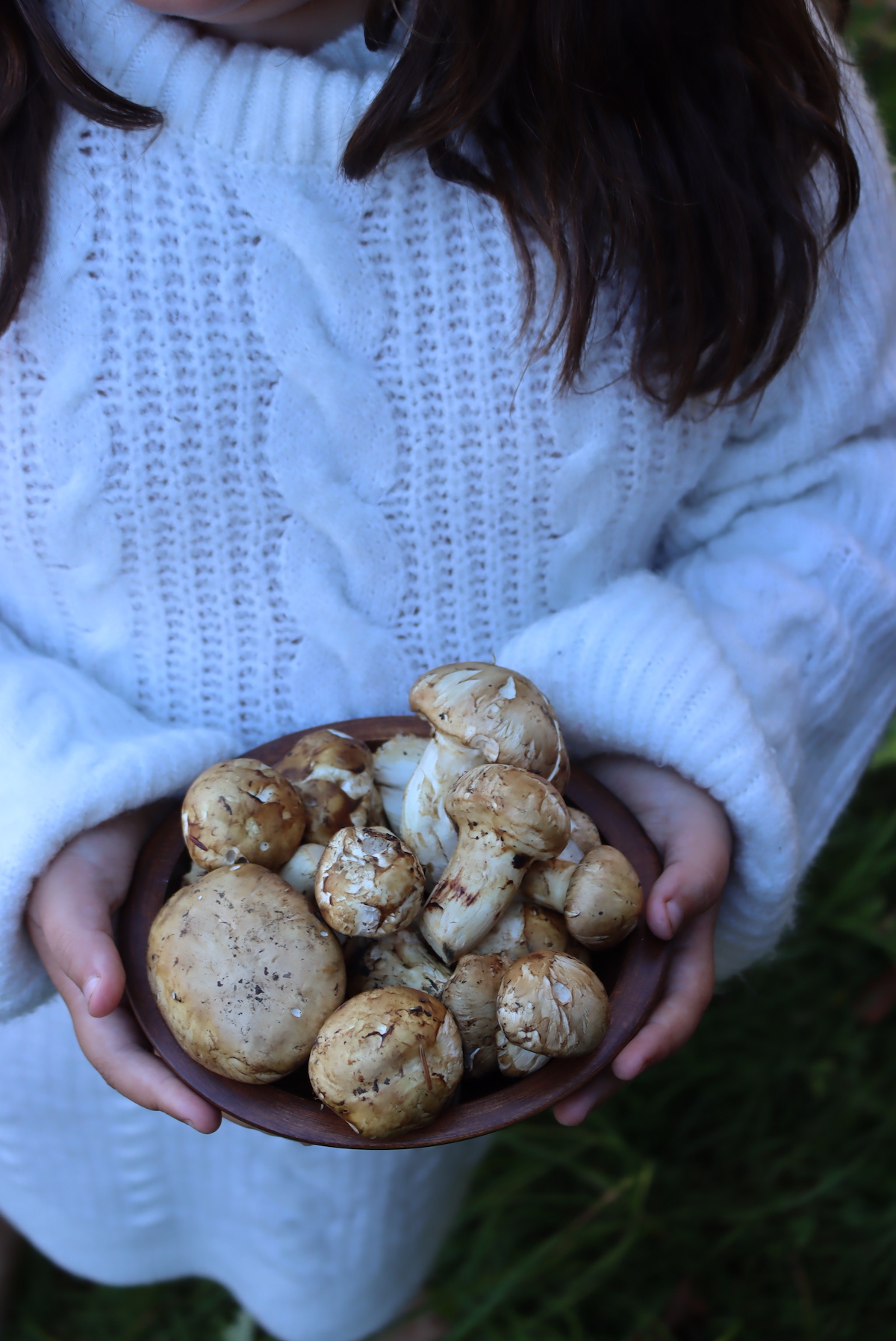
Oyster Mushrooms
Incredibly popular as a cultivated mushroom, you can also harvest wild oyster mushrooms.
Oyster mushrooms aren’t all that picky about substrate, or season for that matter. You can even find some species of oyster mushrooms growing in the dead of winter.
These are a great mushroom to forage year-round, but they tend to peak in the autumn.
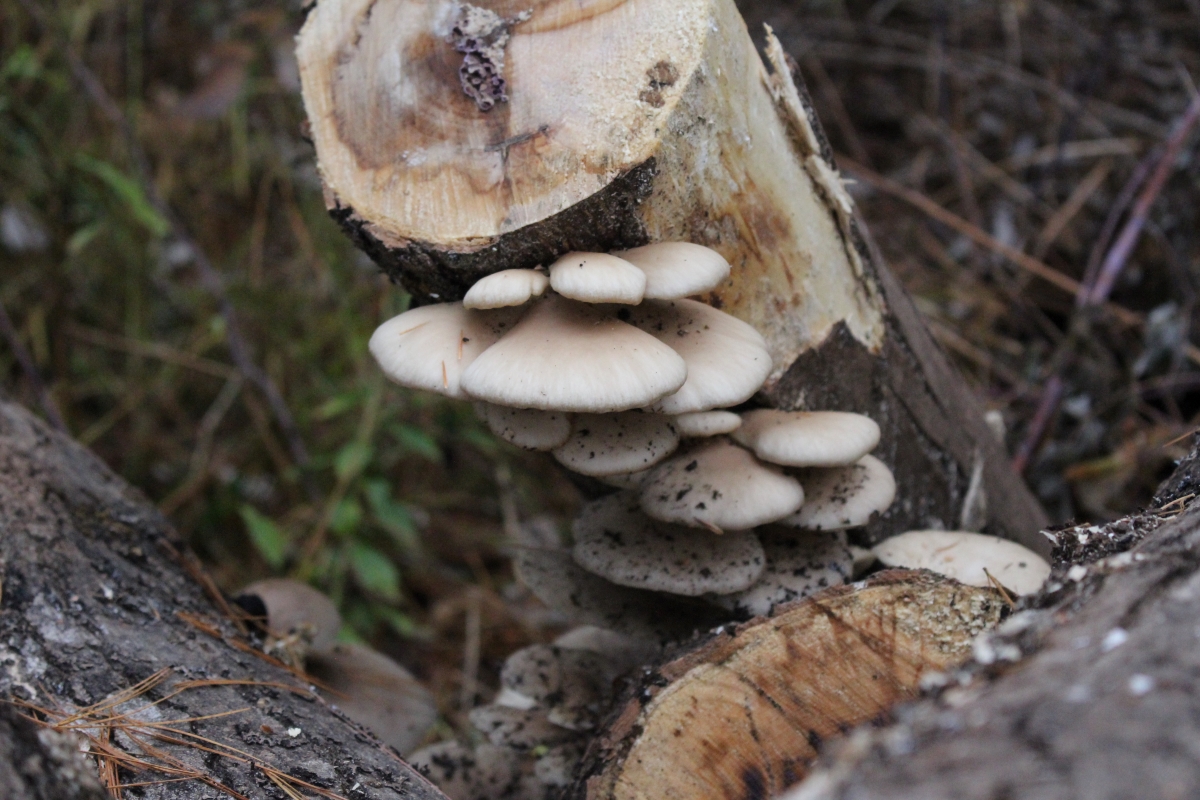
Puffball Mushrooms
While giant puffballs are the most well-known, there are actually quite a few edible puffball mushroom species, and they’re all tasty. Watch for any that are black on the inside, as those are toxic, but if it has a white interior, there’s a good change it’s tasty.
Still, be 100% certain of your ID, as there are some mushrooms that look like puffballs early in their lifecycle before they grow a stalk and open up their mushroom cap to expose gills.
In general though, puffballs are considered a great beginner friendly wild mushroom.
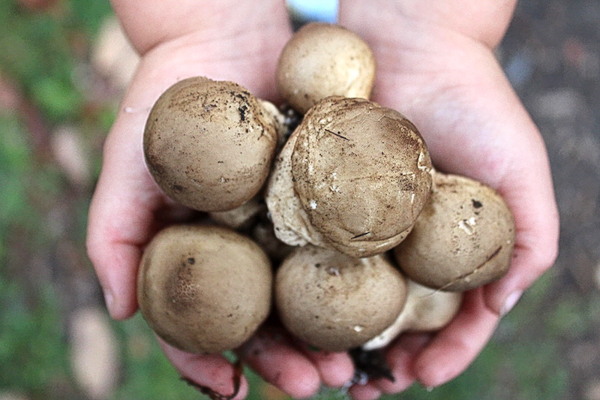
Saffron Milk Caps
The brigh orange caps and crunchy texture of saffron milk caps makes them a unique edible. Most species bruise green after harvesting, making them a splotchy sight that adds great color to dishes.
As the name “milk cap” suggests, many of these species exude a milky latex when cut. In the kitchen, they’re valued for their crunchy texture that stays firm when cooked.
These are especially valued in Spanish cooking, but they’re eaten all over the world.
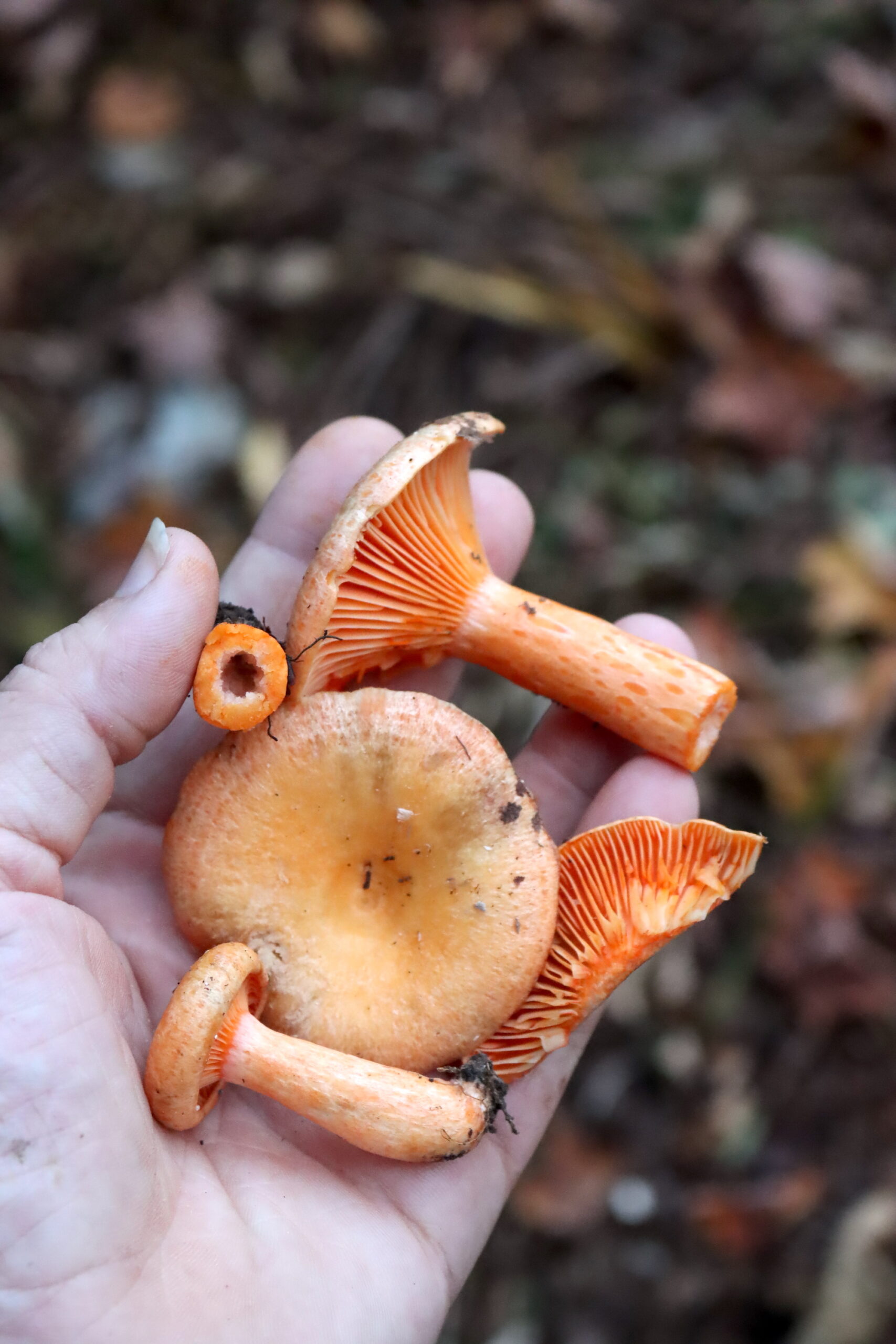
Shaggy Mane Mushrooms
Perhaps one of the most common autumn mushrooms, shaggy manes grow from lawns and high-traffic areas, making them popular with casual foragers that happen upon them (since they’re found in many places people frequent).
They can be tricky to cook, and they break down within hours after harvesting, so make sure you have a plan for using them before you harvest.
In any case, they’re incredibly common, so you might as well make a plan before autumn, and there’s a good change you’ll run into them.
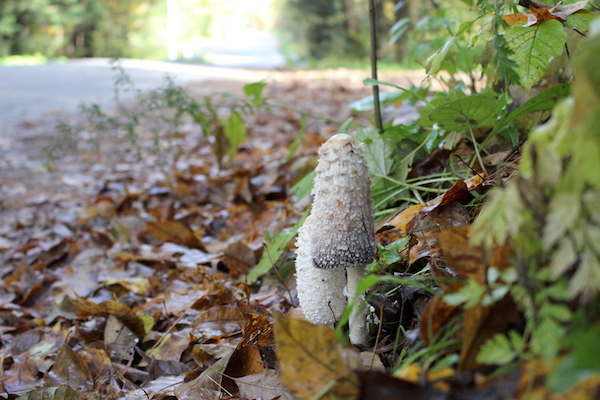
Shrimp of the Woods
The current consensus is this is a type of mushroom parasite that targets honey mushrooms, but mycologists still haven’t made up their minds.
Whatever they are, shrimp of the woods are easy to identify, as nothing really looks like them. They don’t really have a “seafood” flavor, but they have a springy texture, kind of like shrimp meat.
They work well in place of shrimp in any dish, and they’ll add texture while soaking up other flavors.
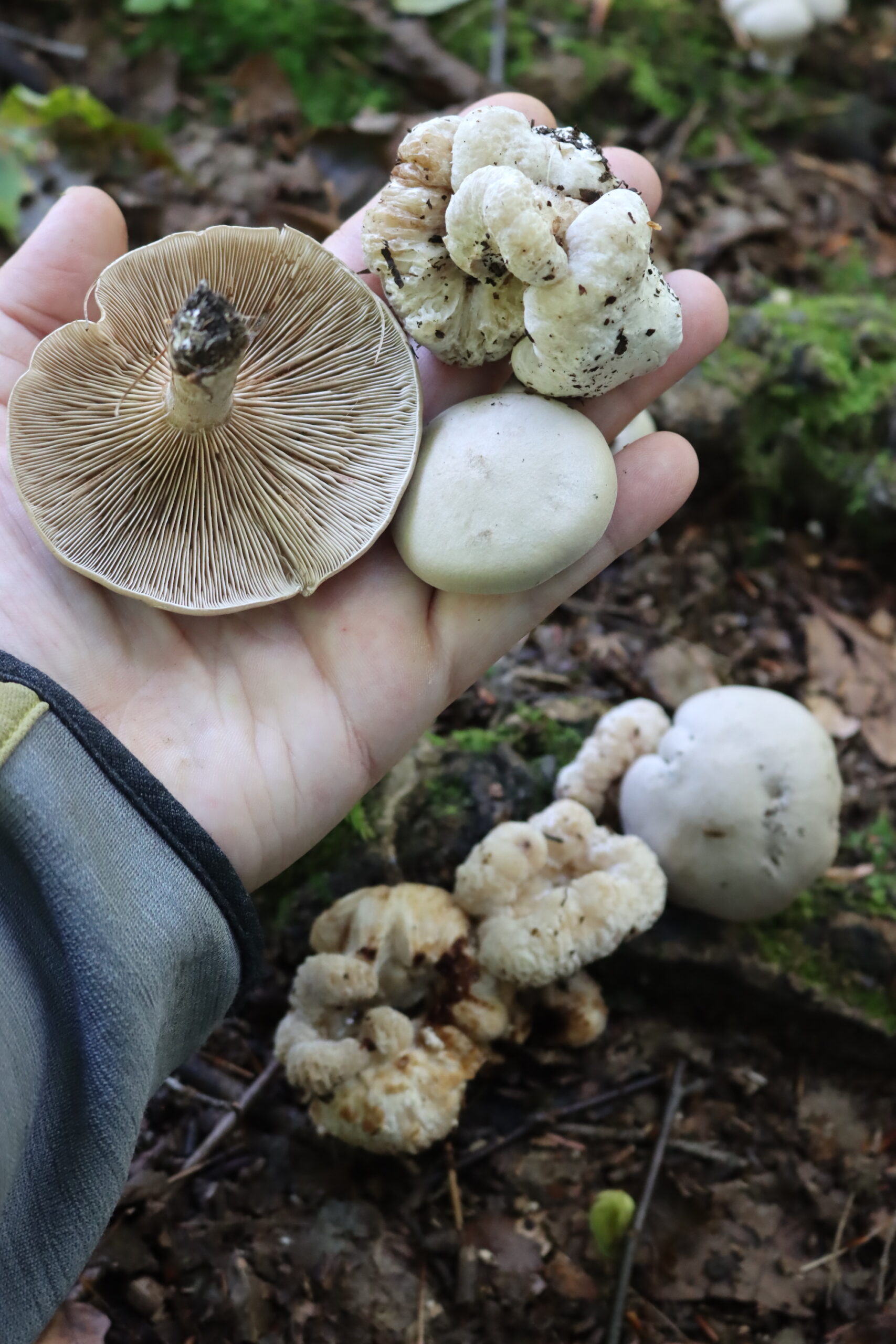
Turkey Tail Mushrooms
Turkey tails are incredibly common…and so are their look alikes. There are a surprising number of wild mushrooms that look like turkey tails, but still, there’s a simple 7 step guide to identifying them that will make it easy enough.
Be sure they have pores (not gills) and that the pores are very, very tiny…and that will really help ensure that you have turkey tails.
These aren’t really an “edible” mushroom, but they’re considered a choice medicinal mushrooms, and there are many expensive turkey tail mushroom supplements on the market.
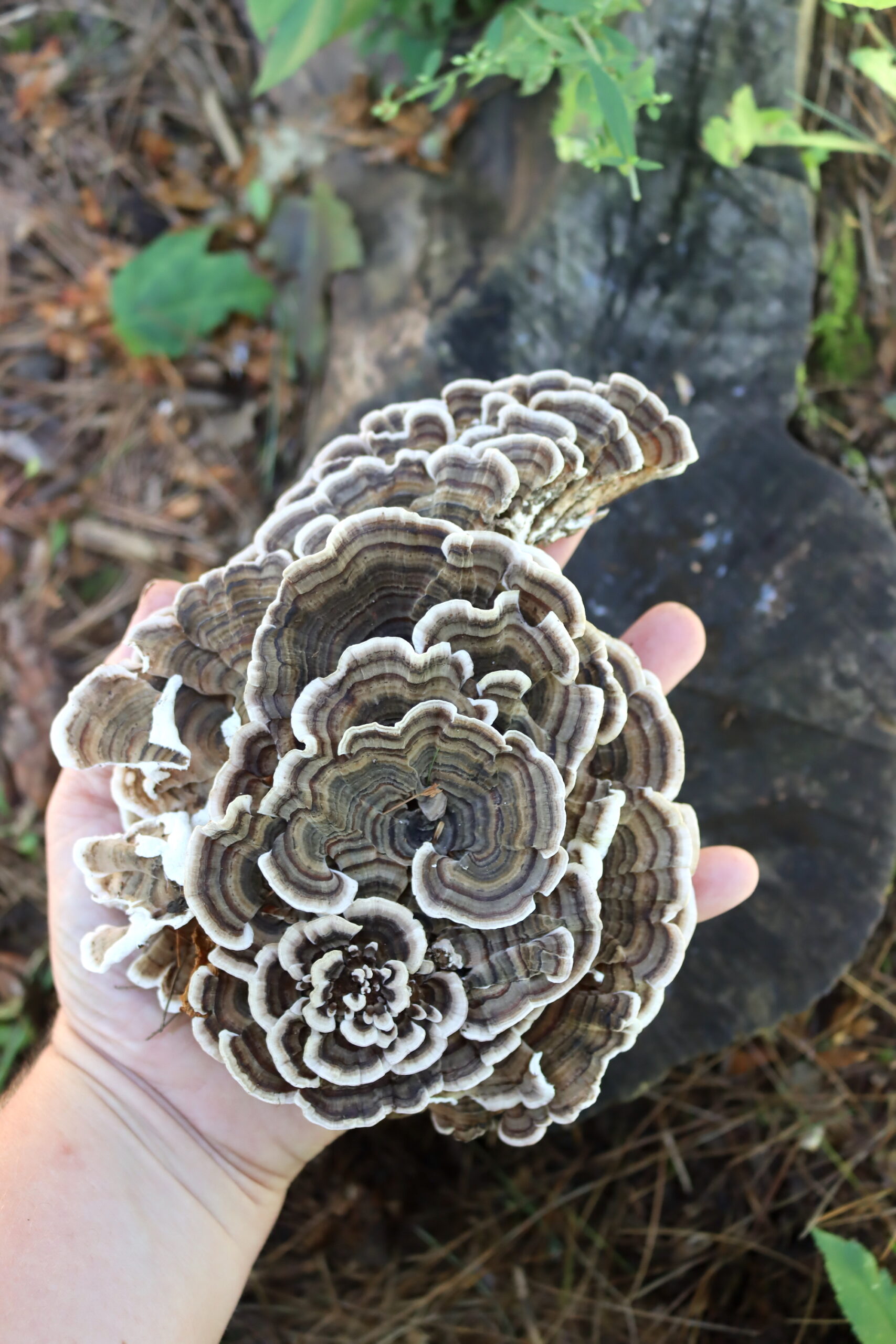
Velvet Foot or Enoki Mushrooms
These, I warn you, are tricky to identify, and they will require a spore print to be 100% certain on your ID. They have a toxic look-alike that looks more or less exactly like them, that will grow right next to them on the same wood.
Still, if you’re willing to do a spore print, you can confidently forage these mushrooms, and they’re incredibly common.
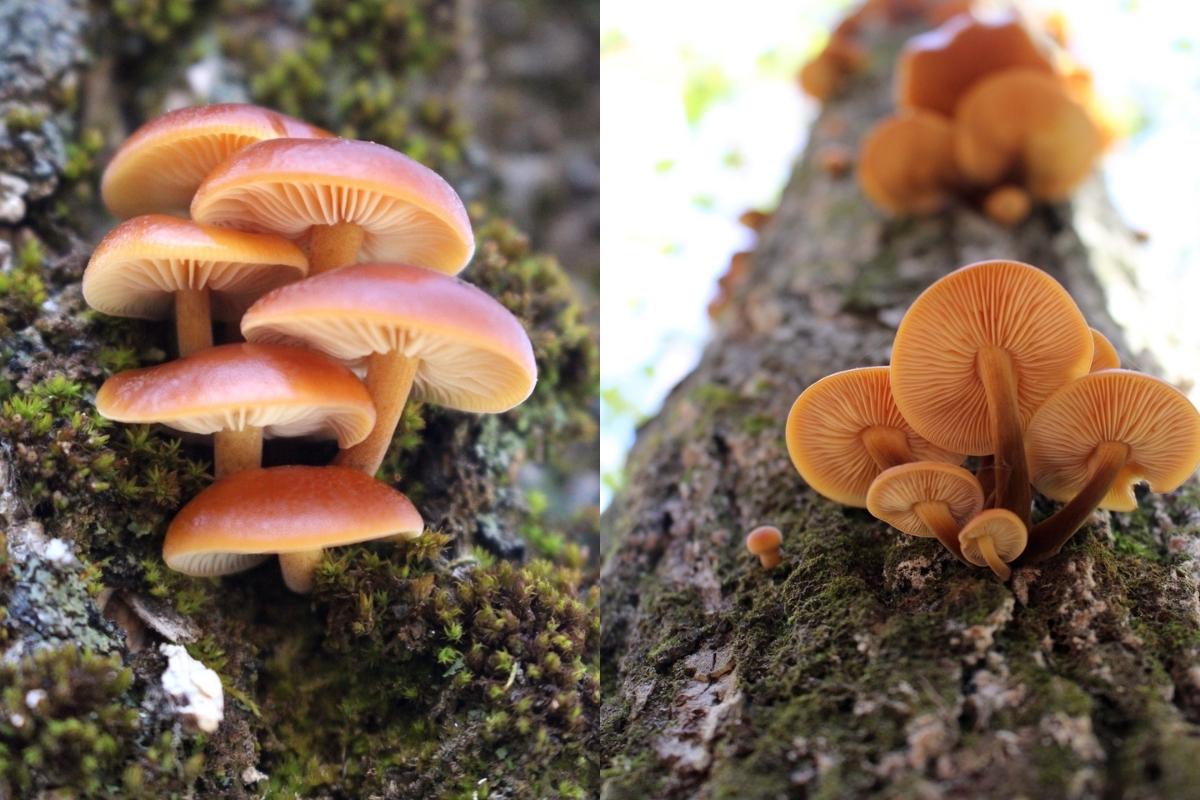
Winecap (or King Stropharia)
Loved by permaculture gardeners, winecap mushrooms are decomposers that build wonderful soil. They grow just about anywhere there are woodchips or woody debris, making them common in mulch piles (and under landscape plantings).
You can grow winecap mushrooms easily at home, but they’re also all over the landscape for foraging each autumn.
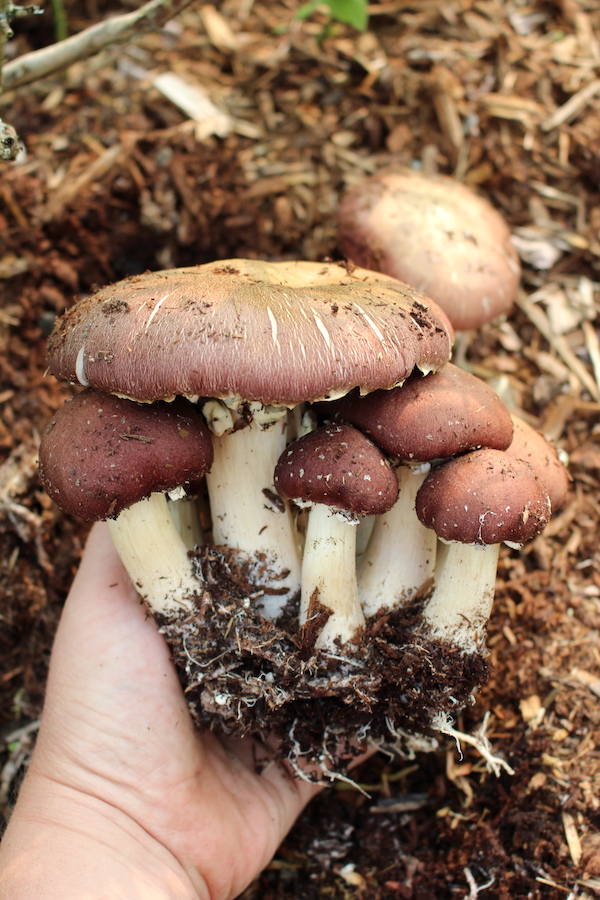
Witches Butter Mushrooms
A common sight in the woods, witches butter mushrooms spout just about any time there’s enough moisture, including in the middle of winter in cold climates.
With autumn rains, they’re especially common in the fall, and they’ll pop out of dead and dying trees all over the forest.
The bright orange color makes them easy to spot.
While they’re not all that tasty, they are both edible and medicinal, and they’re used in for respiratory complaints in Chinese medicine.
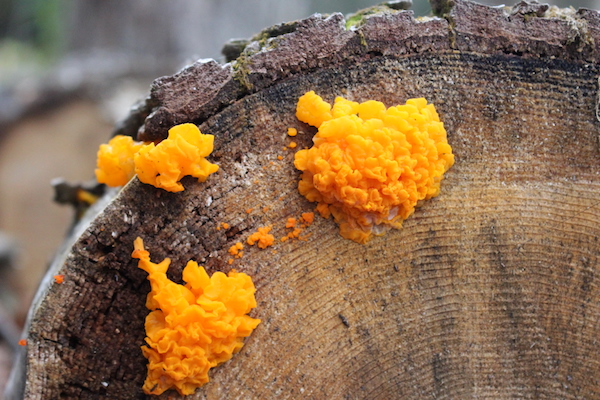
Wood Blewits
Another fun purple/blue mushroom, wood blewits are always a welcome sight in the woods each autumn.
You’d think they’d be unique, but there are actually a number of look-likes, so be careful with this one.
Chefs seek out their rich flavor, and that makes them well worth the effort and extra care needed for identification. They’re described as fruity, aromatic, and earthy, and they’re lovely when sauteed in butter and added to just about anything.
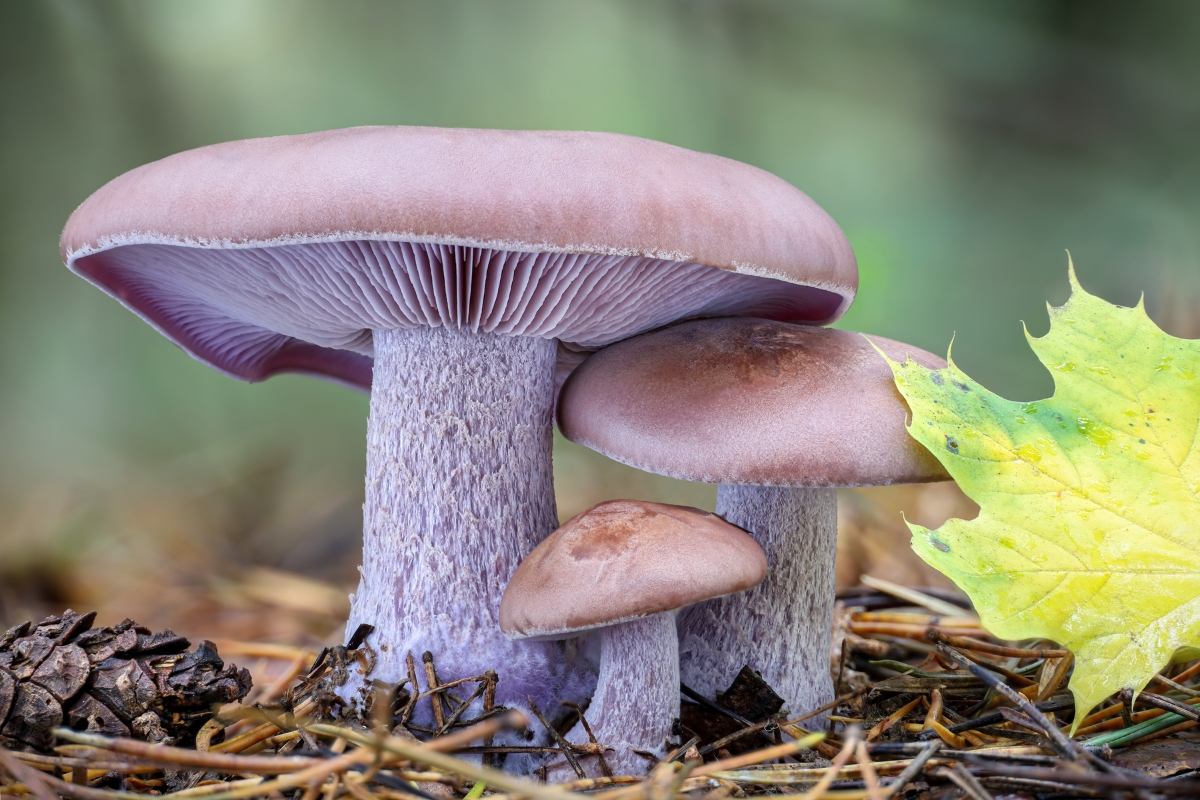
Yellowfoot Chanterelles
Most people are familiar with chanterelles, but there is a special group of chanterelles that love cool weather.
Winter chanterelles, also known as yellowfoot chanterelles, come out when temperatures drop in autumn. In the pacific northwest, you can find them all winter long, but here in Vermont, they’re a special treasure for fall.
They have a fruity apricot aroma that’s truly spectacular, and we use them in both savory and sweet recipes. If you love yellowfoots, you should try chanterelle ice cream!
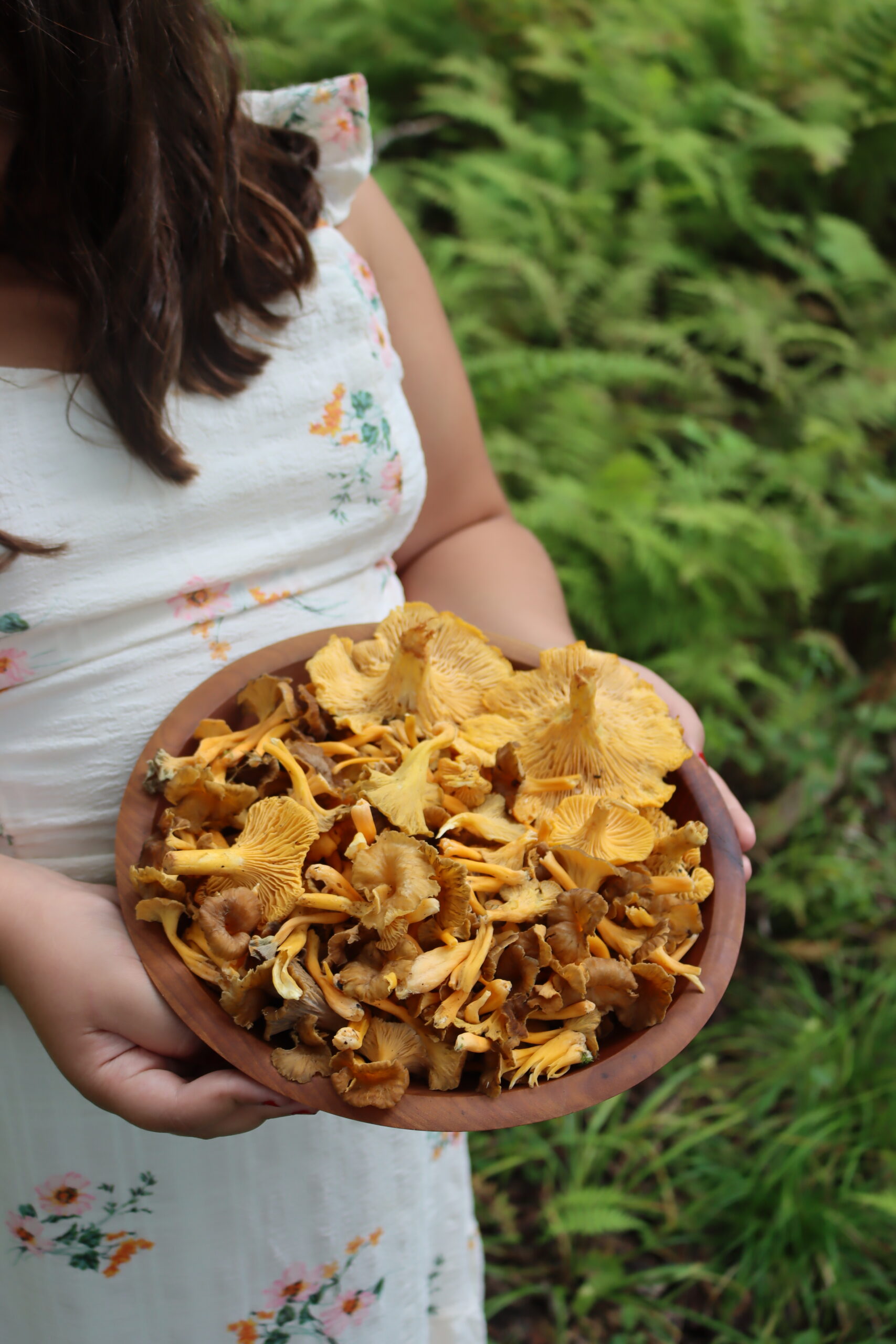
Fall Foraging Guides
Looking for more incredible wild edibles to forage this Autumn?
- Foraging Black Walnuts
- Foraging Butternuts (White Walnuts)
- Foraging Beechnuts
- Foraging Shagbark Hickory
- Foraging Barberry
- Foraging Rose Hips
- Foraging Rowanberry
- Foraging Autumn Olive
- Foraging Partridgeberry
- Foraging Nannyberry
- Foraging Highbush Cranberry
- Foraging Hobbleberry
